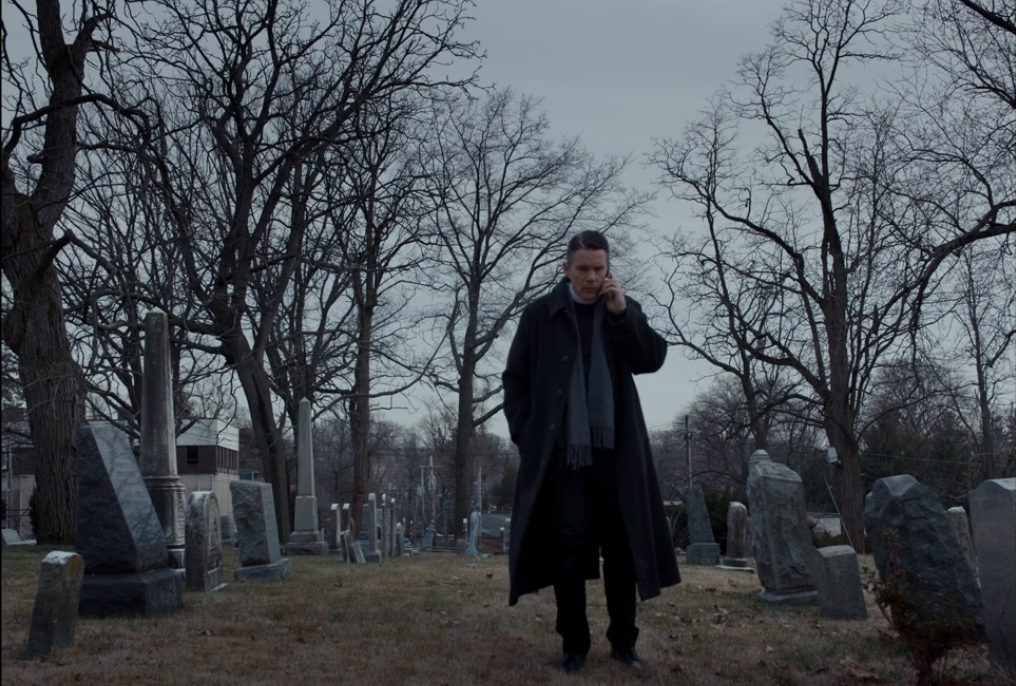by Max Wilbert / Deep Green Resistance “And for destroying the destroyers of the earth…” – Revelations, 11-18
The film “First Reformed” has an interesting premise. Toller (Ethan Hawke) is the sad, solitary pastor of a small church who is asked to help Michael (Philip Ettinger), an activist and member of his congregation, who is struggling.
The two begin a dialogue, and Michael shares a sense of hopelessness in the face of ecological collapse. “It’s 2017,” he says, “and the IPCC said in 2010 that if drastic changes weren’t made by 2015, the entire planet’s ecology might collapse.” He also points out that hundreds of environmental activists are killed worldwide every year.
As Toller grapples with the existential questions brought on by this conversation, Michael’s wife Mary (played by Amanda Seyfried) finds explosives and a suicide vest hidden in the garage, and shows them to Toller, who takes them away. After discovering that his stash gone, Michael commits suicide.
The first major flaw in the film is the perpetuation of the stereotype that being aware of the state of the planet—toxification, species extinction, global warming, the refugee crisis, etc.—is to be consumed by all-encompassing depression. Michael is also described as having “no friends” and being “barely even sociable.”
These ideas are inaccurate and dangerous. The key message is this: if contemplating ecological collapse will drive you to suicide, then the science and discourse around ecological collapse is dangerous and should be avoided at all costs. This idea strengthens and validates the culture of denial that dominates popular discourse, and the stereotype that revolutionaries are depressed and alone.
In my experience, the opposite is true: those of us who fight back have rich communities and better mental health than the average. These themes resurface later in the film as well.
Toller is left to provide some small support to Mary, now a widow. But he remains deeply troubled by the statistics and trends on ecological collapse that the film accurately depicts.
The film sets up a tension between Toller’s small, struggling church and a massive nearby congregation—generously funded by a large fossil fuel corporation. The subtext is clear, and meant to examine the tension between religion at its best, as a source of moral guidance and inspiration for freedom fighters such as those on the underground railroad, and at its worst, as a narcotic, as the opiate of the masses and a tool of colonization.
At this point in the film, Toller’s simmering rage, sadness, and emotion waiting to explode become more apparent. Hidden beneath the puritan veneer of a small-town preacher lies alcoholism and a deep sadness. “No sooner do I close my eyes than desolation is upon me,” he says at one point in the film, after recounting the death of his son in Iraq—a war he encouraged his son to join, then later came to see as unjust.
After a promising start, the film takes a nosedive. There are two points on which the ending of the film fails completely. The first is feminist, the second environmental.
I thought, at first, naively, that this film wasn’t going to fall into casting the female lead as a sex object. But, predictably, it did, in a strange scene in which Mary, who is presumed to be in her early 30’s and who is pregnant and recently widowed, asks Toller, in his late 40’s, alcoholic and a minister, to snuggle with her. However, the scene seems to remain platonic, despite its strangeness and improbability.
After this, tortured by the thought of environmental collapse and by the collaboration between the oil company and his fellow Christians, Hawke decides to take the suicide vest (which he has kept) into a public event and blow himself—and the oil executives—up. After seeing Mary unexpectedly arrive, he doffs the explosives, wraps himself in rusty barbed wire, and prepares to commit suicide himself by drinking drain cleaner. Then Mary comes into the room, her and Toller begin kissing, and film ends abruptly.
What the fuck?
This is why I hate Hollywood and don’t really watch movies. Provided with a fascinating topic and a talented cast, all the filmmaker can muster is this emotional trainwreck, this pointlessness.
As is so common in popular culture, the artist (the director, in this case) confuses emotional turmoil with deep meaning. The final message might as well be a line Toller reads from his bible: “…the knowledge of the emptiness of all things, which can only be filled by the knowledge of our savior.”
Both of Toller’s final approaches—the suicide vest and the barbed wire—represent the self-flagellation of total helplessness. They are only personal solutions, not social or moral or political ones.
Revolutionaries don’t need this shit. We need cultural products—art, music, film, books, poetry, etc.—which nurture our resistance spirit, encourage our hearts, and teach us about healthy lives and effective ways of fighting empire.
Don’t waste your time on this film, or any other bullshit coming out of Hollywood.
